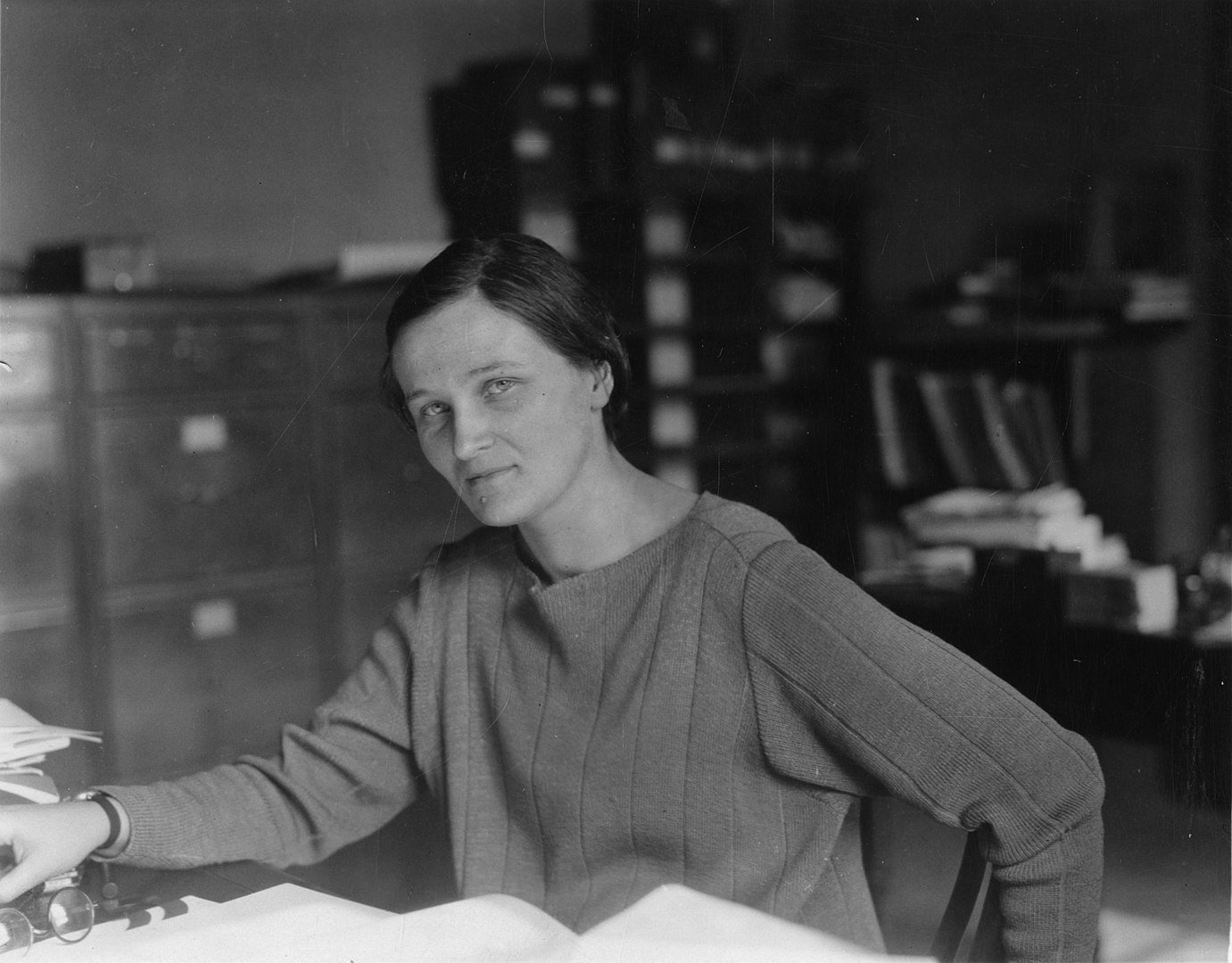Image credit: Smithsonian Institution
We might be made of stardust, as Carl Sagan once famously remarked, but the stars themselves are mostly made of the 2 simplest elements: hydrogen and helium.
This fundamental discovery was made by the British-American astronomer you might have never heard of. Her name was Cecilia Payne-Gaposchkin!
We would like to celebrate the Women’s History Month 2021 by telling the story of this inspirational woman and outstanding scientist!
Cecilia Helena Payne-Gaposchkin (1900-1979)
Cecilia Payne was born on May 10th, 1900, in the small market town of Wendover, 40 miles away from London. She lost her father, Edward John Payne, when she was only four years old. Cecilia’s Mother, Emma Leonora Helena Payne (nee Pertz), raised the future astronomer and her two siblings* alone.
*Cecilia’s brother Humfry (1902-1936) became an archaeologist and her sister Leonora (1905-1996) an architect.
When Cecilia Payne was 12, the family moved to London where she attended the prestigious St Paul’s Girls’ School. Upon graduation, Cecilia continued her education at the [Women’s] Newnham College, University of Cambridge.
Cambridge years
She came to Cambridge to study Botany, but after attending a lecture by Arthur Eddington [who just returned from his historic 1919 Solar Eclipse expedition that provided the first observational confirmation of Einstein’s Theory of General Relativity], Payne became interested in Astronomy. She immediately switched her major subject from Botany to Physics. At that moment the World might have lost a prominent paleobotanist, but gained an outstanding astronomer!
*
Being a female Physics student in Cambridge was not at all easy. Payne’s Physics professor, Nobel laureate Ernest Rutherford, famously addressed his class as ‘Ladies and Gentlemen’ with Cecilia Payne being the only woman in the audience sitting by herself on the front row (women and men were required to take different rows of seats).
And yet, Cecilia was not to be easily discouraged. She began using the run-down Newnham Observatory to observe variable stars. She was a frequent visitor at the nearby Cambridge University Observatory. Payne even approached the Observatory’s director, Arthur Eddington, and asked for a project to work on. He obliged. Soon Cecilia published – while still an undergraduate student – her first academic paper.
In 1923, at the end of the 4-year Cambridge course, Payne successfully passed her qualification Physics exams and received a certificate! Why certificate? This is because [even though two women’s colleges already existed in Cambridge] female students were not awarded degrees till 1948.
‘’It meant that you were granted a certificate saying that you had fulfilled the requirements that would, if you had been a man, entitled you to a B.A., that you had passed the examinations and had attained a certain level in them, and if you had been a man, therefore you would have got a B.A.’’
(Payne-Gaposchkin, from her 1968 interview)
Harvard
A traditional career path for a woman with Payne’s qualifications would have been teaching. But Cecilia wanted to become a researcher, so she had no other choice but to move to America. Payne received a research studentship at Harvard and became a graduate student of Harlow Shapley, the director of Harvard College Observatory.
Shapley planned for Payne to work as a ‘human computer’**, but Cecilia announced that she would be studying stellar spectra, a new field nobody at Harvard worked on.
** It was a common practice at Harvard to hire women to do observations, computations and data analysis.
Cecilia Payne began her own independent research project. It resulted in a published a book, a PhD and a discovery that contradicted the conventional wisdom of the time. Most astronomers, including Eddington, agreed that stars contain the same material as the Earth and in the same relative abundances. But according to Payne’s findings, stars were made predominantly of Hydrogen and Helium with traces of other elements.
This result was so shocking that Payne’s dissertation reviewer, astronomer Henry Russel (as in Hertzsprung-Russel Diagram), thought it impossible. Discouraged, Payne wrote that the results she obtained were most likely a mistake. Ironically, in 1929 Russel came to the same conclusion as Payne. And yet he often gets credit for the discovery.
After PhD
After receiving a PhD, Cecilia continued with her Astronomy teaching and research at Harvard. By then she was a wife to Sergei Gaposchkin and a mother to 3 kids. Cecilia and Sergei often collaborated on studying variable stars. The discoveries they made laid the foundation of modern study of these fascinating objects.
It was not until 1956 that Cecilia Payne-Gaposchkin was finally made a Professor at Harvard, and later a Chair of the Department of Astronomy, becoming the first female scientist at Harvard to hold these titles. In 1976 Payne-Gaposchkin received the Henry Russel Henry Norris Russel Prize (yes, the very same Russel) from the American Astronomical Society “for the lifetime of eminence in astronomical research”. She remained actively involved in astronomical research until the end of her life. Cecilia Payne-Gaposchkin passed away on December 7, 1979.
The 14-kilometer asteroid 2039 Payne-Gaposchkin, discovered at Harvard College Observatory, bears the name of this incredible woman.
More information
Would you like to learn about other female astronomers? Check out our other Blog posts
If you have any further questions or comments, please do let us know! Our Star Dome team would love to hear from you!

